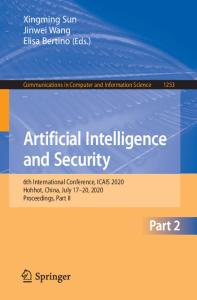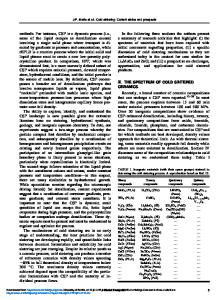Solid-State Ionics in the 21st Century: Current Status and Future Prospects
- PDF / 953,507 Bytes
- 8 Pages / 612 x 792 pts (letter) Page_size
- 97 Downloads / 389 Views
troduction Solid-state ionics (SSI) is an interdisciplinary research area where chemistry, physics, and materials science meet. This field of research concerns properties particularly associated with the motion of ions in solids. Although Takahashi1,2 first introduced the term SSI in the early 1970s, ionic transport phenomena in solids have been known for more than a century, going back to the early 1800s when Faraday discovered fluoride ion conduction in PbF2.3,4 In the past, SSI focused primarily on solid electrolytes, which are virtually pure ionic conductors in which the electric current is almost exclusively carried by charged ions. In fact, the discovery of solid electrolytes has engendered this new research field of SSI. 900
Some solid electrolytes have exhibited ionic conductivity as high as that of concentrated liquid electrolytes (~1 S cm−1). Consequently, solid electrolytes with such a high ionic conductivity have quickly attracted scientific and technological attention. One of the earliest applications employing solid electrolytes was the Nernst glower,5 a type of electrical lamp in which an oxide ion conductor (ZrO2 containing 15 wt% Y2O3) is used as a light source. More recently, polymer electrolytes (as exemplified by the perfluorosulfonate isomer Nafion)6 have played a crucial role in the development of low-temperature oxidative fuel cells.7 The potential for practical use of solid electrolytes has been the driving force for rapid growth in research activities in SSI
over the past several decades, since SSI provides the scientific underpinning for a wide variety of advanced electrochemical devices such as fuel cells, batteries, gas separation membranes, chemical sensors and, in the last few years, ionic switches. Mixed conduction, which arises not only from ion migration increased by modification of polarizability by the variation of electron density in the bandgap energy region but also via electrons or electron holes, plays a crucial role in electrochemical devices. Because the density of both ionic and electronic defects governs the kinetics of elemental charge transfer reactions, the research interest in this field has naturally been extended to mixed conductors. From a microscopic standpoint, ion migration in solids is only possible because of the existence of point defects (i.e., vacancies and/or interstitials) in the solid bulk interior. The concentrations of point defects obey laws of mass action similar to those for dissociation equilibria in liquid electrolytes. In fact, the “defect chemistry” of solids is analogous to well-established solution chemistry in the liquid state. Therefore, the equilibrium thermodynamics of point defects and their diffusion kinetics in the bulk of solids, which have been the main focus of research in SSI during the past century, have been wellstudied and understood.8–11 While the basic concept of ion migration requires the presence of lattice imperfections, such as point defects, special interactions between mobile ions and the host framework are required for t
Data Loading...











